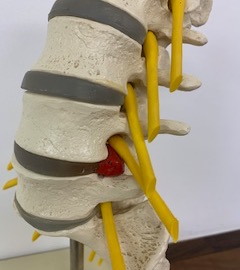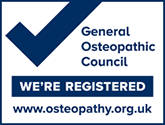Sciatica

Sciatica refers to pain that radiates along the path of sciatic nerve, which branches from your lower back through your buttocks and down each leg into your feet and toes. The sciatic nerve is the largest nerve in the body. It usually affects one side but can affect both. Pain from sciatica is generally felt more into the leg than the lower back region.
What does Sciatic pain feel like?
Sciatica can be described in many ways depending on the cause. The pain can be stabbing, shooting, sharp, sudden jolts of pain, others describe burning, tingling, or excruciating pain sometimes with weakness too. The pain can be constant, or it can come and go.
What causes Sciatica?
Sciatica most commonly occurs when there is a disc herniation. Other causes of sciatica can be a bony spur, spinal stenosis (narrowing of the spine which compresses part of the nerve) spondylolisthesis, piriformis syndrome, pelvic tumours and pregnancy.
Risk factors
These can include Age, smoking, obesity and occupation – heavy lifting or twisting, sitting for prolonged periods.
How long does it last?
Sciatic symptoms are usually the most severe in the early stages when the compression and inflammation of the sciatic nerve are at their greatest. The length of time to improve is very dependent on the cause. Many patients will see improvement in 4-8 weeks, others may need medication such as anti-inflammatory and pain killers from the GP, or be referred for further tests such as x-rays or MRI scans to assess the lumbar spine further.
Tips on prevention
Practice good posture when standing walking and sitting.
Practice safe lifting techniques
Exercise to help maintain aerobic fitness and strength and flexibility in the spinal and core abdominal muscles.
Sit in well supported chairs with good lumbar/ back support. Using a lumbar roll or cushion can help. Take breaks and avoid long periods of sitting.
How can Osteopathy help?
As osteopaths we take a full detailed case history including your medical history to diagnose the cause of the sciatica. This will involve an examination of the lower back, hips and legs including power testing, sensation, and reflexes.
The purpose of treatment is to relieve pressure from the sciatic nerve which may include soft tissue techniques and mobilisation of the lower back to improve range and function. As osteopaths we aim to identify the cause of the sciatica and formulate a treatment plan for each individual patient. We would provide advice on exercises if appropriate and postures to help when sleeping or sitting.
In some cases, patients may need to see their GP for anti-inflammatory or pain killers to help with the pain. Some may need further investigations such as x-rays or MRI scans which we would refer if required




